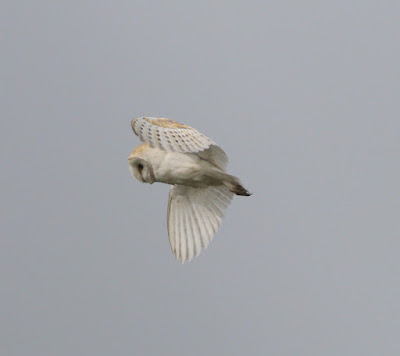We’ve had a few dreary mornings and I’d waited days for a bright, clear morning to drive into the hills with camera at the ready. Tuesday looked promising so I was up early and then drove north and east with fingers crossed as I left the coast behind. This was probably the last chance of the year as upland birds have already started their return journeys to coastal locations. "Click the pics" for close-ups.
To The Coast
There are not many Lapwing around now and I was counting ones and twos only, with little sign of late breeders. In my experience, Lapwings tend to give up rather than try again if their early breeding fails with small flocks appearing as early as mid-June. I found a good number of Curlew, some with large “running” chicks but also a good sized one learning the ropes of calling from a drystone wall.
Lapwing
Curlew
Curlew
There were still good numbers of Oystercatchers but all seemed to be adults lounging around and content to watch the world go by. Even Snipe proved elusive today with plenty of “chipping” from the fields where they have youngsters in tow but none posing along the lines of fence or wall; but I did find one close to a roadside pool that took off as soon as a vehicle came by.
Oystercatcher
Oystercatcher
Snipe
Tower Lodge is a gateway to the country estate beyond but it is no longer inhabited by employees that safeguard the gentry and the grouse.
Tower Lodge - Bowland
A farmer had been trapping moles quite recently.
Moles
This part of Lancashire is meat rearing country; beef and sheep. Sheep that eat dirt from molehills can die from listeriosis, while winter feed for dairy cattle can become foul-tasting or toxic if contaminated by soil bacteria. So there’s a long tradition of mole trapping - showing the moles who’s boss and proving to neighbours that your farming is “reet”.
The word “mole” is thought to derive from the old English word mouldwarp, which literally means earth-thrower. The animals’ forelimbs are large, pink and practically hairless, and, apart from an extra digit, have the appearance of a doll’s hands. So prized were moles’ hands that farmers once kept them in silk bags as talismans for good luck and to ward off toothache, epilepsy and scrofula.
Mole
Moles dig their tunnel systems to catch earthworms, shoving the excavated earth out of vertical passageways to produce molehills. In a 1976 study, researchers counted 7,380 molehills on a single hectare of English pasture, estimating their total weight to be 64,500kg.
Mole Hill
Mole control became a national policy in 1566, when a bitter cold period known as the Little Ice Age threatened England’s food supply. Queen Elizabeth passed “An Acte for the Preservation of Grayne”, which would remain in force for the next three centuries. The law prescribed bounties paid for the destruction of a long and dubious list of agricultural vermin, including everything from hedgehogs to kingfishers. Some parishes paid out a half-penny per mole, others appointed mole-catchers with contracts lasting up to 21 years. In addition to their salaries, mole-catchers sold the silky mole skins, which were prized for the tailoring of waistcoats.
In the early 20th century worms dipped in strychnine became the preferred method for controlling moles on farms. Because strychnine doesn't break down in animal tissue, it can also work through the food chain when a bird of prey or even a domestic dog consumes a poisoned mouse or mole.
In 1963, when the House of Commons debated a bill to ban the poison, David Renton, the minister of state for the Home Office, testified that moles “strangely enough” failed to show “the same symptoms of pain” as other animals. In the end the law banned strychnine for mice and rats, but exempted moles because no ready substitute existed.
In the following decades, British farmers purchased more than 50kg of strychnine each year – enough, in theory to kill half a billion moles. The poison was eventually phased out with new pesticide regulations in 2006.
Summer moves on with as Swallows and Grey Wagtails feed young plus countless Meadow Pipits both young and old along the walls and fences. While there are insects Meadow Pipits tend to stay around but come late August/early September there is a mass movement of the species south and west.
Swallows
Swallows
Meadow Pipit
Grey Wagtail
Other birds today: Redshank, Willow Warbler, Blackcap, Red Grouse, Pied Wagtail, Tawny Owl, Common Sandpiper, Pied Flycatcher, Lesser Redpoll.
Linking today to
Eileen's Saturday and
World Bird Wednesday.































































.jpeg)



.jpg)












